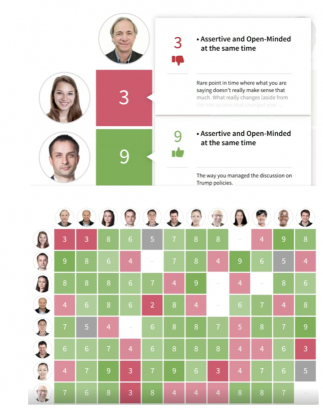Sixty percent (60%) of your grade will come directly from class participation. In most courses around the world that employ the case method, it's a basic equation of quantity + quality = participation result. Quantity is an easily measurable metric (number of times called on to speak in class) but quality is ponderously subjective. In some business schools, a teacher’s assistant or staff member is trained to sit in the room and measure the quantity and quality of participation just like the scorekeeper in Little League baseball. Other professors may record video or take photos of students to evaluate the level of participation after class day is finished. How can the professors who use case method in their courses differentiate between the students who spend hours of individual preparation to link the case to their own diverse professional and personal experience against the students who BS their way through classes without critically reading the cases?
Bridgewater’s Ray Dalio, one of the 100 wealthiest people in the world, may be able to offer one of the most innovative solutions to accurately and objectively measure participation at business schools around the world that use case method. It’s an extension – or application – of the “Dot Connector.” In one of the most forward-looking approaches for operating a business in Industry 4.0, Dalio delivered a TED Talk called “How to build a company where the best ideas win” that shared his principles on a “believability-weighted idea meritocracy” and introduced the "Dot Connector" to the world.
The “Dot Connector” is an application on a propriety iPad that employees at Bridgewater use in meetings to assess each other in real time on a set list of attributes and comment on what somebody says. Conceptually, for case method, students in a classroom could observe each other’s behavior or evaluate their participation on a scale from one to ten including a short, Twitter-esque justification for the numeric score. Each student would be continuously commenting on each other directly (traditional discussion) or digitally (modern technology) throughout periods of class discussion which would result in a pile of Big Data. That data can be evaluated, reviewed and reflected on by the professor and provided as feedback to students for offering a “radically transparent” result (grade) for participation in case method. Likewise, students have a deeper understanding of their ability to communicate and how they are perceived by classmates.
Do you think faculty and students in business schools would benefit from a weight-based believability index? Would it effectively raise the quality of discussions and participation in business school classes - why or why not?

 Brochure
Brochure
 Info Session
Info Session
 Application
Application
 Alumni Voices
Alumni Voices







